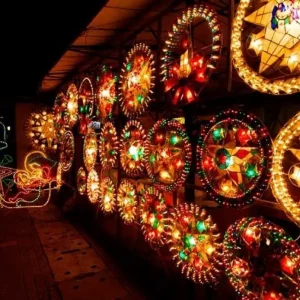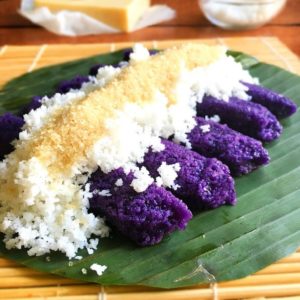128 days of Christmas

IF THERE IS ONE thing that I really miss in the Philippines, it is Christmas. It’s a day – nay, four months – of celebrating the birth of Jesus Christ. Yes, Filipinos celebrate Christmas from September 1 to January 6, the Day of the Epiphany. It’s called the “Ber Months” because they all end with “Ber” –September, October, November, and December. It’s the longest Christmas season in the world. The season starts in earnest and picks up in December when most Filipinos will be in a festive spirit.
The Philippines has the largest population of Catholics (about 80%) and arguably the most religious. Going to mass on Sundays is a special day for Filipinos. Churches are jam-packed with people – young and old. And Filipinos observe the Sabbath as God has commanded in his fourth commandment: Remember the Sabbath day, to keep it holy. For Catholics, Sunday is the Sabbath day. It’s a day of rest and worship. The four preceding Sundays mark the Advent, a period of spiritual preparation in which many Christians make themselves ready for the coming, or birth of Jesus Christ. Celebrating Advent involves a season of prayer, fasting, and abstinence (no meat on Fridays), and repentance. It is followed by anticipation, hope, and joy. But make no mistake, Filipinos start observing these Christian traditions way back in September.
Indeed, Christmas in the Philippines is truly one of a kind. The overwhelming amount of food and presents, it’s time to celebrate family, friends, and community. It’s also time to renew old friendships. Most family reunions, school reunions, and office reunions happen during the Christmas season.
The Philippines also has adopted western traditions such as Santa Claus, Christmas trees, Christmas cards, and Christmas carols.
And come September the first to go up are the nativity scenes – called the “Belen.” Most Filipino households will have their Belen set up early to signify the start of the Christmas festivity. Some towns hold competitions for the best Belen. A complete set of Belen is composed of baby Jesus, Mary, Joseph, and the Three Kings. Some Belens have shepherds and barn animals.
Then the Christmas lanterns – parols — start showing up in the windows of homes. The parol is a Christmas ornament unique in the Philippines and it is one of the most significant and oldest Christmas traditions in the country.
It’s commonly star-shaped but they could come in every shape, color, and material imaginable. The parol was originally made to hang on lamp posts to guide mass-goers to Simbang Gabi — which starts on December 16 — but now the parol can be found everywhere like outside houses, in malls, and offices.
Simbang Gabi means “Night Mass.” Filipinos attend mass nine days before Christmas either at night or in the early hours of the morning. It’s a religious practice and Filipinos believe that attending all nine masses will grant them their wishes.


Getting up for Simbang Gabi makes you hungry. The two most popular treats are rice cakes (bibingka and puto bumbong), two delicacies that Filipinos love. They usually are sold outside churches after mass.
Simbang Gabi is also one of the longest running traditions in the country. This is a “must” for any devoted Christian to do, which is one of the most cultural experiences you can get. It is done to honor the Virgin Mary and the farmers who worked in the country during the Spanish colonization of the country. The farmers worked very early in the morning to avoid the heat of the sun at noon.
Caroling is very popular in the Philippines. Filipino kids form groups called “cumbanchero” and they go from house to house with their makeshift instruments. The adults are more formalized with some groups wearing a uniform of the same color and style. Of course the favorite color is red. Although caroling is a western tradition, it has become very popular among adults. The caroling group usually starts practicing in November. They get together every week on a Friday or Saturday evening at one of the members’ houses. As usual it’s a potluck and everybody brings his or her favorite food. They practice for two to three hours and then eat their food with gusto. It’s another feast day! That’s the fun part of it. Meanwhile, they start contacting their friends and ask for permission to carol on a certain day, beginning on December 1. On caroling days, they assemble in one of the members’ house and then they all travel to the host’s house together.
At the host’s home, they form a semi-circle and sing using their songbooks. The caroling leader will give an extemporaneous speech thanking the host(s) for allowing them to carol in their home. Then the group sings for about 30 to 45 minutes. The group leader will speak again and call upon the host(s) to present them with a gift from the carolers. The host(s) will receive the gift and in turn present the carolers with an envelope containing some money. Normally, the host(s) have prepared a sumptuous buffet dinner for the carolers. After dinner, carolers thank the host(s) and make their exit, singing, “We wish you a Merry Christmas…” This routine is repeated about two or three times each night until December 23. Just imagine how much money the group would raise for the 13 days of caroling. They would then donate the money to their favorite charities or their parish church, leaving some amount to fund their own projects. Thus ends the time-honored ritual of receiving and giving gifts on Christmas.
On Christmas Eve, most Filipinos will wake up at midnight to welcome Christmas Day with Noche Buena, a feast of traditional Filipino Christmas dishes like lechon, hamon, queso de bola, spaghetti, and fruit salad.
Then on Christmas Day, a special mass called Misa de Gallo is held. It’s a celebration that includes lighting candles, singing, and sometimes a re-enactment of how baby Jesus was born.
Exchanging gifts is something that Filipinos; particularly the kids look forward to. Sometimes, gifts are exchanged on numbers picked from a bowl. So nobody knows from whom the gifts are. So it’s important to select a gift that is gender-neutral because you don’t know who would end up with it. But to your godchildren – manitos and manitas – the aguinaldo that godfathers and godmothers give to their godchildren involve cash in an envelope, in addition to special gifts that they asked from them. It is customary for ninongs and ninangs to ask their godchildren what do they want for Christmas. And you’d better not disappoint them.
New Year’s eve is a celebration to welcome the New Year. Again, a feast called Media Noche is served. And as midnight approaches, everybody joins in making loud noises – torotot, sparklers, firecrackers, and other noisy instruments — when the clock strikes midnight. Young kids are encouraged to jump up and down so they’ll grow taller. Neighbors will bring out fireworks in the streets and begin their noisy celebration. For about 15 minutes, the whole neighborhood is aglow with fireworks – like the “bawangs” that produce a loud and dangerous explosion — on the streets. Filipinos believe that loud noises deter evil spirits from entering the New Year, thus the noisier the better. Also, husbands and wives and their children kiss each other as a sign of affection.
And finally, the Feast of the Three Kings or the Epiphany. It’s commemorated on January 6th or the “Twelfth Day” after Christmas. The 12 days between Christmas and Epiphany are known as the “Twelve Days of Christmas.” But in the Philippines, it’s “128 Days of Christmas.”
Merry Christmas to all my PerryScope readers and have a wonderful and prosperous New Year!(PerryDiaz@gmail.com)




Leave a Reply